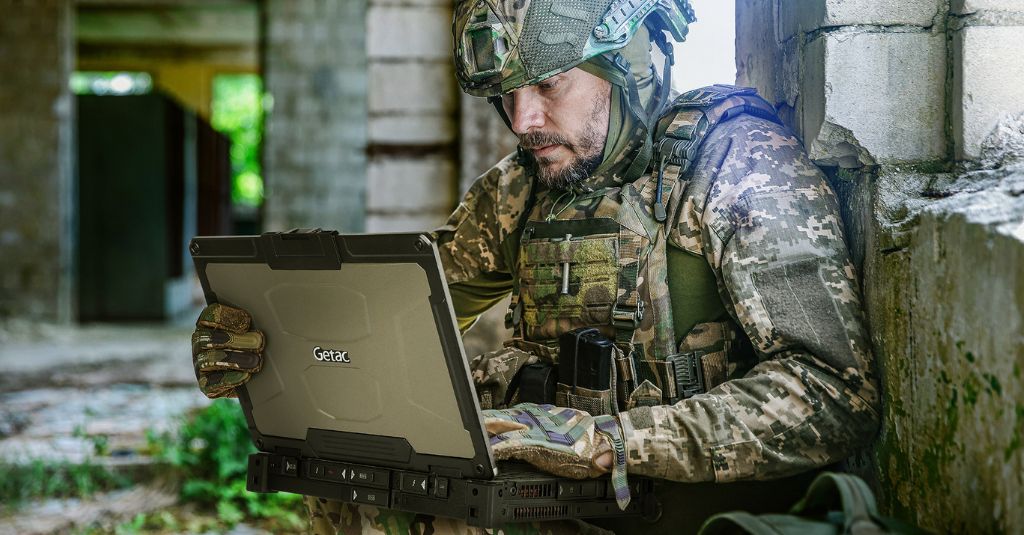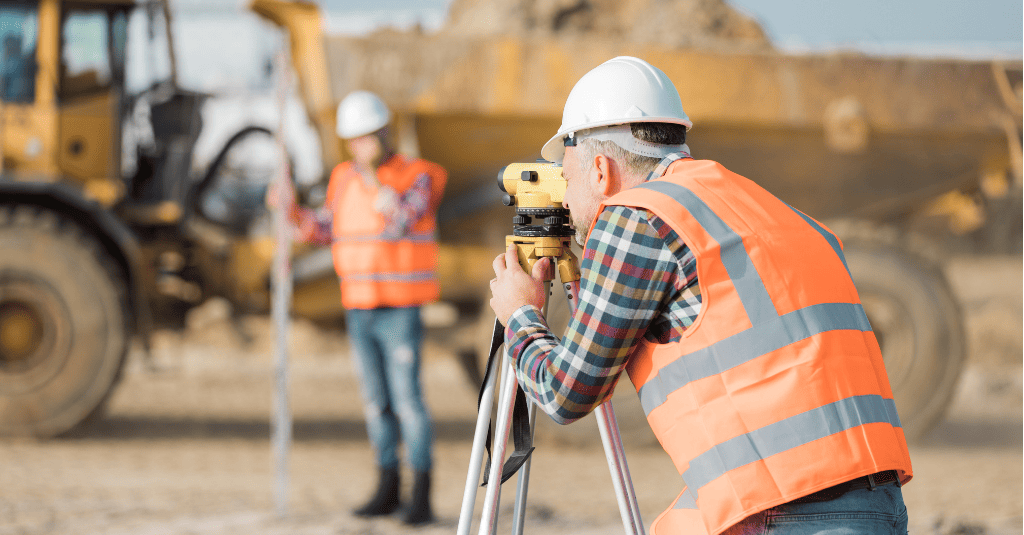As one of the leading rugged computer providers, Getac offers extensive rugged computing product lines and serves a wide range of vertical markets.

Getac Select
A combination of rugged computing devices, software, accessories and professional services in a purposeful range of specifically tailored solutions.
Getac Video Solutions
Video capture, evidence management, rugged hardware and robust software solutions for law enforcement and other industries.
Defense
Mission-critical COTS computing that delivers high powered processing and reliability in operational environments
Public Safety
Law Enforcement, EMS, Fire & Rescue applications
Utilities
Smart Meter Reading and Installation, On-site Safety, Utility Asset Management, Workforce Management for Utilities, Mobile GIS, Surveying and Mapping
Transportation & Logistics
Railroad Management, Airport Management, Port Management, Long-haul Delivery Fleet Management, Warehouse Materials Handling
Industrial Manufacturing
Industrial Programming and Robotic Control, Facility management, Compliance and Inspections, Workforce Management, Inventory and Warehouse Management, Factory Automation and Plant Monitoring, EAM and CMMS Solutions.
Automotive
Optimized Rugged Mobile Solutions to drive a smarter approach throughout the automotive value-chain.
Natural Resources
Mining, Forestry and Construction applications
Oil & Gas
Remote Support, Asset Management, Field Data Analysis, Workplace Safety
Ensuring the safety and well-being of workers is not just a moral imperative—it’s an essential requirement for any safe industrial operation. Adhering to safety regulations is crucial to prevent catastrophic impacts on employee safety, morale, and retention. With the competitive nature of jobs in the industrial sector, one could argue that robust safety measures are as vital as the machinery that powers our factories and plants.
This comprehensive guide will tackle the multifaceted approach required to create and implement effective and comprehensive health, and safety policies and measures in industrial workplaces that save lives and promote your business’s longevity and success.
Statistics from the Occupational Safety and Health Administration (OSHA) and other global industrial oversight bodies are replete with grim reminders of accidents that shatter lives and businesses. Regular safety audits play a crucial role in identifying and addressing potential safety breaches. From debilitating falls to fatal electrocutions, the causes of serious workplace injuries and accidents are often rooted in preventable breaches of safety protocols. These incidents result in considerable annual costs to businesses. For industrial leaders, such costs are a stark reminder that safety in manufacturing, is not a passive consideration but an active investment.
A strong safety culture leads to more engaged and productive employees. Employees and supervisors who feel secure in their working conditions are more engaged, efficient, and innovative. Conversely, with unsafe working conditions in a production environment, the quality of work suffers, productivity down, and the potential for errors and accidents multiplies. A culture of worker safety builds an organization’s reputation and brand equity, as it signifies a deep-seated value for human capital.
Comprehensive risk assessments are the first step in mitigating workplace hazards. This rigorous exercise involves identifying and analyzing potential sources of danger, injury, and hazard for your workforce. The aim of comprehensive safety program is to map out where and under what circumstances an accident might occur and then implement protocols for effective risk mitigation.
Inventory management of hazardous materials, especially safety equipment, medications, first aid supplies, and hazardous substances, is critical to audits. Communication is also essential in managing and mitigating risks in industrial settings. Whether relaying an emergency alert, sharing updates on potential hazards, or coordinating response actions, two-way radio, and similar devices ensure that every message is conveyed and received, loud and clear.
A key aspect of risk assessment is learning from past incidents. Thorough incident reporting is crucial in this process as it helps document and analyze each event comprehensively. Every incident offers valuable insights into your operations. You and other employees can identify procedural weaknesses and implement corrective measures through lessons learned. This iterative evaluation and improvement process is critical for staying ahead of potential hazards, prioritizing safety, and fostering a culture of continuous vigilance.
Effective health and safety training is a fundamental building block of a more safety and health-focused culture. It is through education and reinforcement that safety principles underpin the workplace culture. Training should be dynamic, interactive, and ongoing, ensuring that all personnel are aware and well-versed in the various safety protocols that keep them safe on the job and at the workplace.
Practical, hands-on training can be complemented by posters, manuals, and even digital resources that serve as regular touchpoints for safety reminders. Safety drills and simulations are also invaluable for preparing employees for fires, injuries, or chemical spills. Investing in such activities conveys that safety in manufacturing workplace is not just a policy but everyone's responsibility.
PPE is a critical component in worker safety, acting as the first line of defense against occupational hazards, ensuring that skilled hands can work another day.

PPE is a critical component in worker safety, acting as the first line of defense against occupational hazards, ensuring that skilled hands can work another day.
PPE is a vital safeguard for industrial employees working in hazardous environments. Helmets, gloves, hard hats, goggles, and harnesses protect against serious workplace injuries. Selecting the appropriate PPE for specific job roles and environments to ensure workplace safety is a critical decision that OSHA standards and industry best practices should guide safety guidelines.
Providing PPE is only half the battle. Ensuring that it is consistently worn and properly maintained is equally important. Establishing a positive safety culture, clear policies on using and caring for PPE, and regular safety inspections and maintenance checks can prevent a false sense of security from taking root. Every part of your safety policy must be strong and secure to be effective.
Emergencies are, by their nature, chaotic and unpredictable. A well-rehearsed emergency response plan can make a significant difference between manageable disruption and catastrophic fallout. Protocols for emergency exits should be clearly outlined, with designated employee roles and responsibilities for every foreseeable emergency scenario.
Regular safety drills are essential for ensuring that your emergency response plan is a dynamic and actionable strategic document. These simulations can reveal logistical bottlenecks and oversights in different emergency scenarios that may compromise the efficacy of your response. Certainty in your processes makes you better prepared.
The industrial Internet of Things (IIoT) has ushered in a new workplace safety and monitoring era. Sensors embedded within equipment and workspaces can detect real-time anomalies and unsafe conditions, alerting workers and management to potential safety hazards beforehand. Data generated by these devices provides rich insights for predictive maintenance and process optimization.
Integrating rugged solutions into industrial safety strategies presents a compelling approach for organizations aiming to leverage technology in promoting workplace safety. Rugged devices are engineered to withstand the harsh conditions often found in industrial settings, ensuring that critical safety information and real-time data are always accessible to workers, even in challenging environments.
Digital safety management systems offer a centralized platform for tracking training, incident reports, and compliance checks. These systems streamline administrative tasks, allowing safety officers to focus on analysis and improvement rather than paperwork. Some advanced platforms even offer AI-driven analytics to identify trends and suggest corrective actions.
Inertia and resistance to change are formidable foes in seeking a safer work environment for employees. Addressing these cultural barriers requires the ability of leadership to listen, communicate, and collaborate with employees. Effective safety leadership involves listening, communicating, and collaborating to shift undesirable customs and attitudes toward workplace safety, changing behaviors, hearts, and minds.
Budget constraints are not an excuse for skimping on safety expenditures in manufacturing. The costs of an accident, from a human standpoint, is immeasurable. Financial investment in health and safety processes and procedures is essential to safeguard your workforce and organization.
Having a safety-first culture is vital for preventing workplace injuries, as it encourages the use of appropriate safety gear, and adherence to safety procedures, ensuring that every action, no matter how routine, is performed with worker safety in mind.

Having a safety-first culture is vital for preventing workplace injuries, as it encourages the use of appropriate gear and adherence to safety procedures, ensuring that every action, no matter how routine, is performed with worker safety in mind.
In the dynamic landscape of industrial work, workplace safety and procedures are mandatory. Continuous monitoring and improving safety protocols and procedures are crucial to keeping pace with changing processes and technologies. Regular audits and safety reviews are essential for ensuring that best safety practices remain relevant and effective.
A robust safety management system must be embedded within a whole organization and broader support ecosystem. Legal and industry-specific rules and regulations provide a foundation, while industry groups and safety forums offer a community of practice to benchmark against. By participating in these networks and sharing knowledge, your company can contribute to a safer manufacturing industry.
Regardless of language or nationality, pursuing safety is a universal endeavor that unites industrial workers and employers in manufacturing companies worldwide. Ensuring your workplace is a safety environment for your employees' signals to the wider community that the industrial sector is grounded in care and responsibility.
The comprehensive strategies outlined in this guide are not quick-fix solutions but a roadmap for sustained and substantial improvements in health and safety outcomes. Each measure, from risk assessment to continuous monitoring, contributes to a culture of health administration safety that is at once protective and empowering.
The time to act is now. Industrial excellence without compromising safety is not just achievable—it's imperative. When we prioritize occupational safety and the welfare of our workforce, we foster an even manufacturing environment where both people and profit can thrive.
As one of the leading rugged computer providers, Getac offers extensive rugged computing product lines and serves a wide range of vertical markets.


